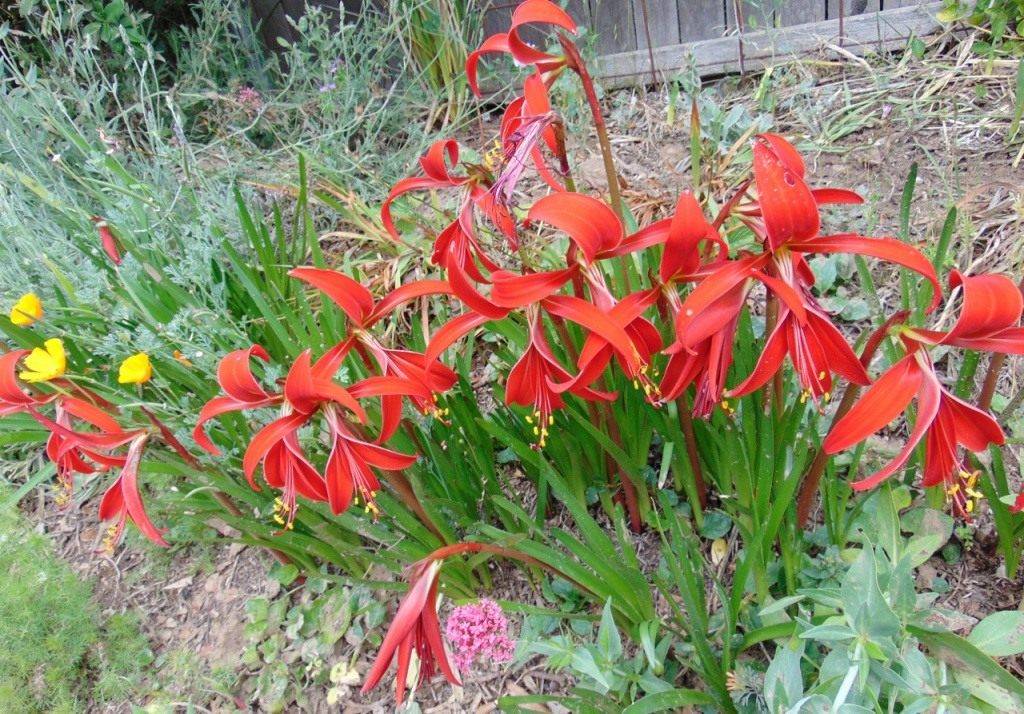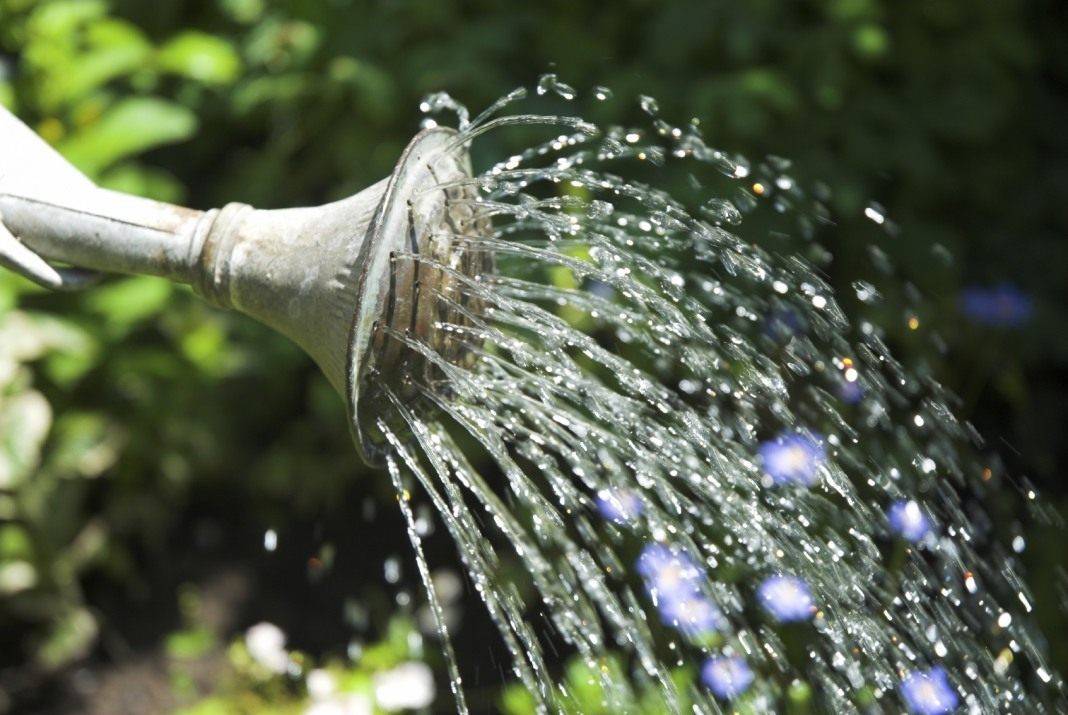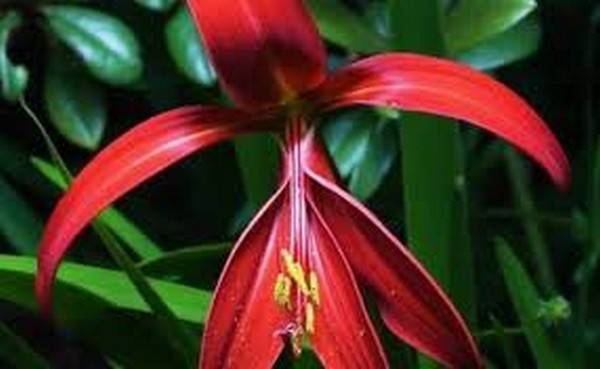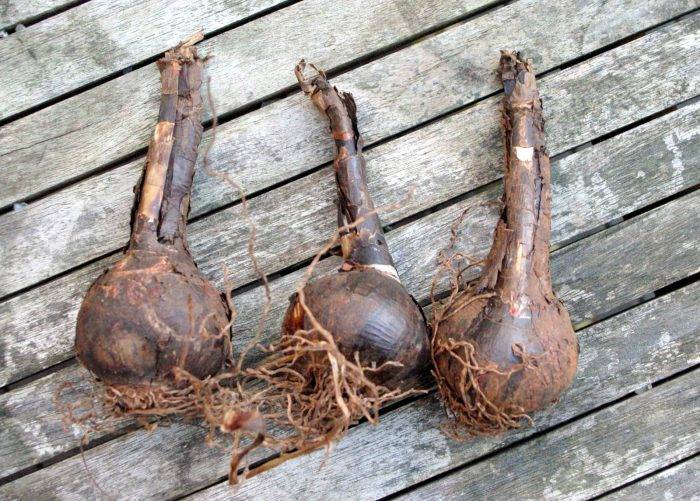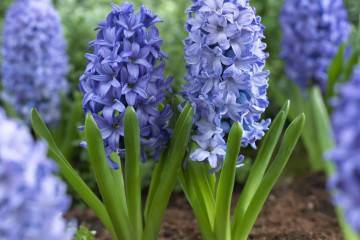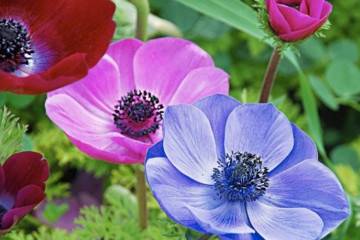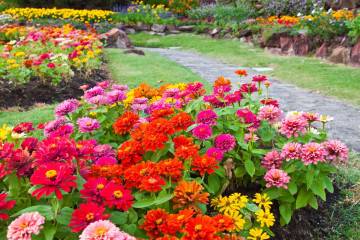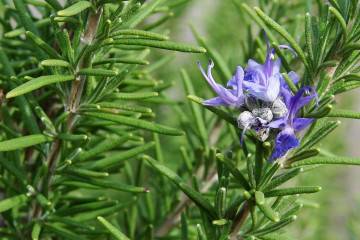Shprekelia - growing and care in the open field
Content:
Sprekelia, or Sprekelia, is a representative of the Amaryllis family. The flower was named in honor of Spreckelsen, the mayor of the city of Hamburg. It was he who gave the bulb of the plant to Karl Linnaeus. Sprekelia, the cultivation and care of which has many features, will become a real decoration of the garden.
Description of the plant sprekelia is magnificent
This ornamental plant resembles hippeastrum in appearance. It has a rounded bulb with a long neck. Its diameter reaches 5 cm. There are 3-6 leaves on the bush. They are flat and gray or dark green in color. They reach 45 cm in length and 2 in width.
The culture has a hollow reddish peduncle. In length, it grows up to 30 cm. One flower 8-10 cm long usually appears on the bush. It consists of different segments that bend down, stand straight and roll up into a tube.
At home, you can grow 2 types of sprekelia:
- The fairest (Formosissima). It is also called the gorgeous sprekelia. The culture has several varieties - Karwinskii, Orient, Peru, magnificent (Howardii). They can have raspberry, striped, dark red inflorescences.
- Large-flowered. This variety was bred by flower growers. It is characterized by several peduncles and larger flowers, which reach 15 cm in diameter. The plant has red flowers with a pleasant vanilla aroma.
Sprekelia care at home and outdoors
If sprekelia is grown great, planting and care have certain characteristics.
Pot for sprekelia
First of all, you need to choose the right flower pot. The best option would be a container that is 3 cm in diameter larger than the bulb. To grow a healthy crop, a drainage layer should be laid on the bottom of the pot. It can consist of expanded clay, crushed brick or gravel.
Soil and fertilizer
The optimal solution for a plant will be soil with the inclusion of clay-sod and leafy soil, humus, peat, coarse sand. The listed components are mixed in equal parts. You can also add a little charcoal to the composition, which will help to avoid decay processes.
At the stage of foliage formation, the plant needs to be fed every 2 weeks. In this case, you should use liquid mineral products for deciduous plants. They ensure the development of green mass. At the first signs of peduncle formation, fertilizer can be used for flowering crops.
Humidity and watering
The culture does not require high humidity. It develops well in an ordinary city apartment. Water the flower in moderation. The plant tolerates excess moisture worse than its deficiency.
To avoid undesirable consequences, it is best to water the crop after the topsoil has dried. With a lack of fluid, the leaves of the flower wither and sag. They may wrinkle.
Temperature and illumination
The optimal temperature regime for a plant is + 20-25 degrees. For the winter, the plant should be moved to a bright and cool room with an air temperature of + 5-12 degrees. At lower values, the bulb may freeze. If the temperature is higher, the plant may start growing ahead of time.
Spreckelia requires good illumination. The plant normally perceives exposure to direct sunlight. To place culture in the room is near the south window. It is also permissible to put the flower on the western or eastern windowsill. If possible, the plant is moved to the garden or taken out onto the balcony.
Pruning sprekelia
The flower needs sanitary pruning. In this case, it is necessary to remove dead buds with peduncles and get rid of old leaf plates that are not able to take part in photosynthesis.
Flower reproduction methods
Growing and caring for spreckel in the open field have certain features. It is permissible to propagate the culture by seeds or bulbs.
How to plant an onion
Daughter bulbs that appear on the bottom of an adult plant must be planted out. They should be separated with a sharp knife. It is recommended to treat damaged areas with activated carbon.
Planting material should be planted in separate containers. The procedure is recommended in March. To do this, you must use fresh soil. The bulb should not be completely buried. In this case, you need to open the top and neck.
Growing from seeds
It is quite difficult to grow a crop by seed method. Collect material for planting in mid-autumn. With the arrival of spring, it must be planted in a container with moist and fertilized soil.
When sprouts appear and strengthen, they need to be planted. This should be done at a distance of 10-15 cm. Strengthened shoots should be planted in unprotected soil. A plant grown from seed begins to bloom only after 3 years.
It will be possible to obtain full-fledged seed material only by manual pollination of the crop. However, this breeding method does not help to maintain varietal qualities.
Fresh seeds sprout for 3 weeks. It is not recommended to postpone the landing. It should be done immediately after collection. For 5 weeks, the seeds will completely lose their germination.
To plant a plant, the seed must be scattered over the surface of the soil and slightly tied with earth. It is necessary to grow flowers at a temperature of + 22-25 degrees. When the third leaf appears, the young bulbs can be moved to individual containers.
Transplant rules for growing outdoors
In the garden, the plant must be grown as an annual. At home, the culture can grow up to 5 years. When growing sprekelia in the open field, you should follow these rules:
- buy bulbs just before planting;
- choose a place that is well lit by the sun, it should not have drafts or stagnant moisture;
- you need to plant from March to May.
When planting, the bulbs are deepened by 10 cm. At the same time, the minimum interval between plants is 10 cm. On top of the beds, cover with a mulching layer. In cold climates, after the growing season, the bulbs must be dug up.
With the complete dying off of the foliage, you need to dig up the plants and clear the soil of dry tops. It is not recommended to cut the roots on the bulbs. Store the material in dry peat. Place it in a cool place. If the temperature is more than +10 degrees, the bulbs will germinate ahead of time.
Flower care during dormancy
The culture has a long dormant period. It lasts 6 months - from November to March. It is necessary to prepare a flower for a dormant period with the arrival of autumn. In this case, it is necessary to gradually reduce the number of waterings. When the last leaf dies off, watering can be stopped.
Sprekelia bulb can be left in a flowerpot. In this case, the container should be moved to a dry and cool place. The temperature regime should be + 16-18 degrees. If desired, the onion can be removed from the pot, transferred to a container with dry peat and transferred to a cool place with a temperature of + 12-13 degrees. In such conditions, the flower can stay until the end of winter.
With the onset of spring, the bulb is moved back to the pot.
Shprekelia is a beautiful ornamental plant that can be grown at home or planted in open ground. In order for a culture to grow and develop normally, it must be properly cared for. In this case, the plant must be watered and fed in a timely manner. He also needs to provide protection against diseases and parasites.
